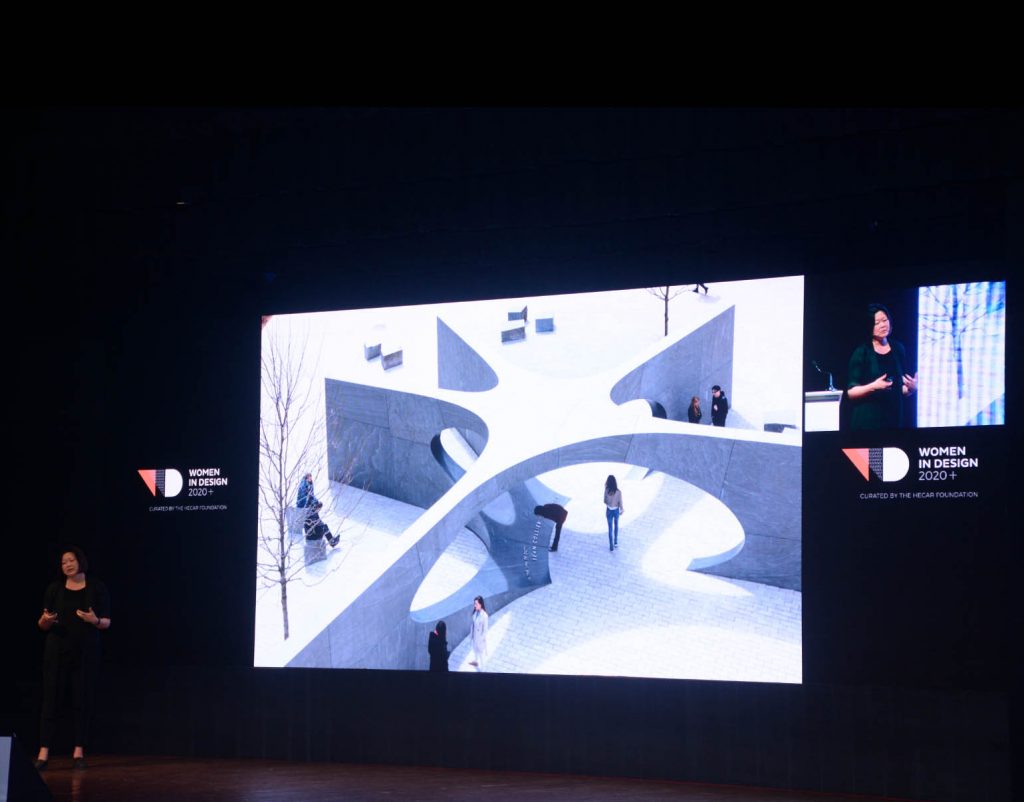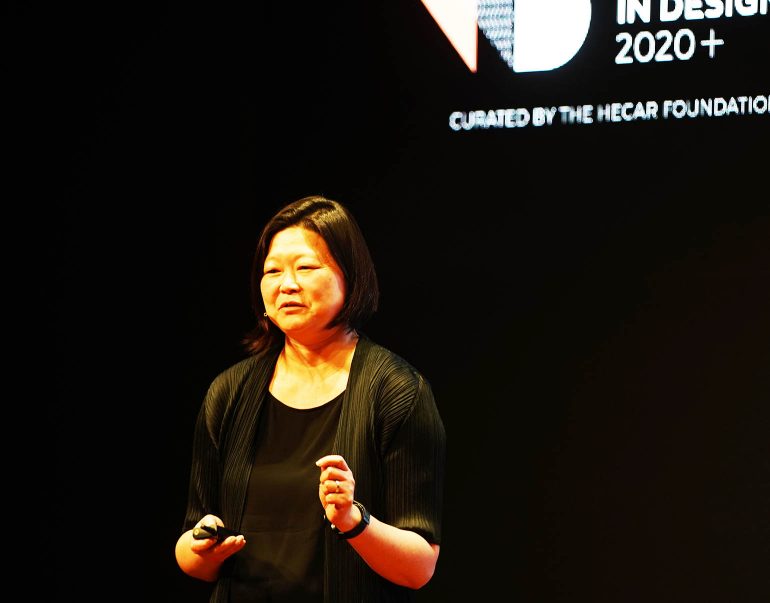In mid-2018, architect J Meejin Yoon made news for being appointed at a position never occupied by a woman—the dean of the College of Architecture, Art and Planning at the Cornell University. Previous to this, Yoon headed the department of architecture at the Massachusetts Institute of Technology (MIT), where she was known for initiatives that crisscross architecture with art, biology, science and technology. For such initiatives, Professor Yoon was presented with the Irwin Sizer Award for the Most Significant Improvement to MIT Education in 2013.
Her own practice, Höweler + Yoon (with husband Eric Höweler), is a prodigy of using technology in architecture. The studio’s work gathered applause from an auditorium packed with best of the architects from around the world who were attending and presenting at the Women in Design 2020+ conference in Mumbai. In between sessions and breaks, we snatched an hour or so for a conversation with Yoon. Excerpts from the conversation:
How does it feel to be the first woman dean at Cornell’s College of Architecture, Art and Planning after 122 years?
(Laughs.) When I saw that news, I was like, ‘Oh, it took a long time.’ A colleague of mine at Cornell, Mary Woods, is the first woman to be tenured in the Department of Architecture. That took 120 years.
But what’s really exciting is that say at least five or six of the Northeast schools are being led by women deans. Having so many women leaders of architecture programs, both at the chair and the dean level, is very significant at this moment. I hope from here on things emerge as different because earlier there would be only one woman or a perhaps a handful women, but now it’s a critical mass, and it’s thrilling to be a part of that group.
Now, with this current role, how do you manage your time between Cornell and your studio?
I had to change the amount of time I devote at the office because this role, as the dean, is bigger than my previous role at MIT as the head of the department. And then there is also the distance, the office is kind of far from the practice. I try to spend one day a week at my practice, and really, now I can manage only one project at the studio.

Architecture has been taught at universities for more than a century, and the education of the discipline has developed its boundaries and structure. But technology is transforming at a breakneck speed, and many architectural practices, including your own, benefits from it. How can academic institutes keep pace with the changing technology?
It’s true that technology is always changing. Our machines are always changing. So the goal shouldn’t be skill based, like learning a software language or a new technique. It should be to understand the fundamental principles of all tools and technology. Some students arrive at architectural school without ever having really drawn anything. And where it’s true that technique and skill building is important, in the beginning, just learning the basics of every tool and technique should be the focus. Mastery of any tool might take a lifetime, but the time argument doesn’t work when it comes to understanding the fundamentals of basic digital tools.
New digital technologies construct virtual spaces that users can experience and interact with. Do you see technologies like AR, VR and immersion impacting architecture in a significant manner?
I think it’s a little too early to tell how influential it will be. It is an important territory for architects to lead versus letting other industries pioneer the development and future uses. Right now, it’s maybe much more heavily biased towards gaming, the interesting thing about which is there’s a lot of imaginary environment, and one benefit is that it could make a project, a plan and a section accessible more viscerally to people.
What are the other major influences on architecture?
Art has an incredible influence on the field of architecture. Contemporary art practices move the discipline of architecture in different ways. Engineering also. The tools developed in engineering to test structural models or to simulate parameters impact the discipline. I think what’s interesting now is that biology and material science are having an impact on architecture—rethinking our materiality, compostable bricks, growing our architecture and such. What’s exciting is that in every decade there are new influences to the field, and I think the goal is that our field could also influence other fields.
We often hear, especially in conferences like these, that architecture education in the US has a Western bias. Do you agree? Are we taking steps to move away from it?
Art, architecture, history and art history in the US has had a kind of Western bias for centuries. But also, since a decade or so, there has been a movement to expand the understanding of architectural history and herstory, and to understand architecture through global history. There have also been some amazing projects also. The Andrew W Mellon Foundation funded one where multiple academic institutions, including the MIT, are collectively working to put together a global history of architecture and sharing resources across institutions for archival material, visual material, etc, which is a really positive initiative that helps students understand architectural history as a global history.
What aspects of Mumbai stood out for you? Any observations?
People in the city use spaces in all ways from industry to recreation to just navigating, there’s still an informal-meets-the-formal in the urban context here. There seems to be a kind of ease to the chaos in this city somehow, which I find beautiful.
**

